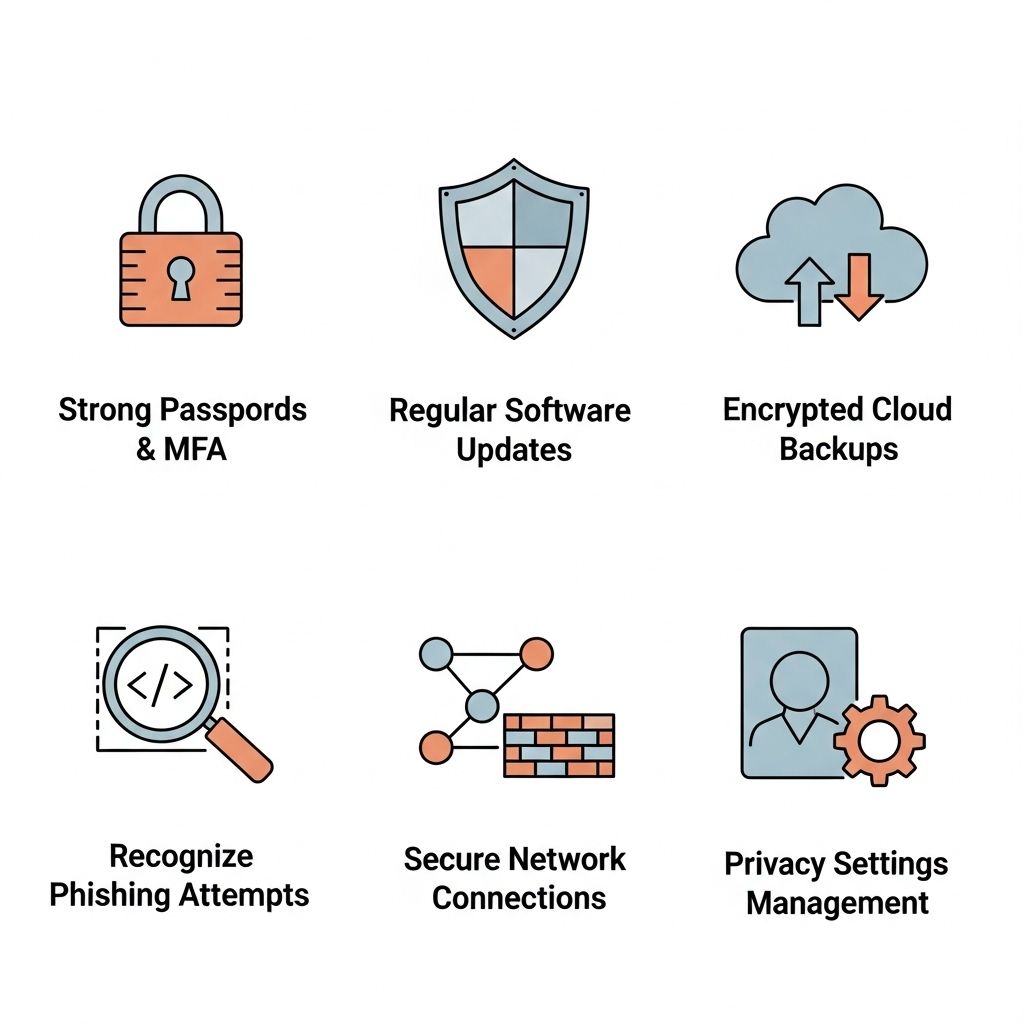In the rapidly evolving digital landscape, securing your business’s online presence has become more crucial than ever. With cyber threats on the rise, companies need to adopt robust strategies for protecting their data, customers, and reputation. As we navigate through 2025, implementing effective cybersecurity measures is essential for any business, regardless of size or sector.
Understanding the Importance of Cybersecurity
Cybersecurity is not just an IT concern; it’s a core component of your business strategy. A single breach can lead to devastating financial losses, legal penalties, and damage to your brand’s reputation. Here are a few statistics that highlight the urgency of cybersecurity:
- 85% of businesses have experienced a cyber attack in the last year.
- The average cost of a data breach in 2025 is estimated to exceed $4 million.
- Companies with a strong cybersecurity framework can save up to 50% in potential breach costs.
Key Cybersecurity Threats in 2025
1. Phishing Attacks
Phishing remains one of the most prevalent cyber threats. Attackers utilize deceptive emails or messages to trick employees into revealing sensitive information. To combat phishing:
- Implement email filtering solutions.
- Educate employees about recognizing phishing attempts.
- Encourage the use of two-factor authentication (2FA).
2. Ransomware
Ransomware attacks have become more sophisticated, often targeting larger organizations with the potential for high payouts. Protecting against ransomware involves:
- Regularly backing up data and ensuring backups are secure.
- Using advanced endpoint protection tools.
- Educating staff on safe browsing practices.
3. Insider Threats
Employees can unintentionally or maliciously compromise security. To minimize insider threats:
“Trust but verify.”
Employ strict access controls and ongoing monitoring. Consider conducting regular audits to identify unusual activities.
Effective Cybersecurity Strategies
Building a Comprehensive Cybersecurity Policy
Every organization should have a well-documented cybersecurity policy that outlines procedures, responsibilities, and protocols. A comprehensive policy should include:
| Section | Description |
|---|---|
| Access Control | Define who has access to what data and resources. |
| Incident Response | Outline steps to take in case of a security breach. |
| Data Protection | Establish guidelines for data handling and storage. |
| Employee Training | Schedule regular security awareness training for employees. |
Choosing the Right Technology
Investing in the right cybersecurity technologies is essential. Key technologies to consider include:
- Firewalls: Act as a barrier between your internal network and external threats.
- Intrusion Detection Systems (IDS): Monitor network traffic for suspicious activities.
- Encryption: Protect sensitive data both at rest and in transit.
The Role of Employee Training
Employees are often the first line of defense against cyber threats. Providing ongoing cybersecurity training can significantly reduce vulnerabilities. Consider implementing:
- Regular workshops and seminars.
- Simulated phishing attacks to test employee awareness.
- Clear reporting channels for suspected breaches.
Monitoring and Incident Response
Your business needs to be prepared for the possibility of a cyber incident. An incident response plan should include:
- Identification: How to detect and confirm a breach.
- Containment: Steps to limit the damage.
- Eradication and Recovery: How to remove the threat and restore operations.
- Post-Incident Analysis: Learning from the incident to prevent future breaches.
Legal and Compliance Considerations
Staying compliant with regulations is vital in protecting your business from legal pitfalls. Key regulations to be aware of include:
- GDPR: Requires strict data protection measures for businesses operating in Europe.
- CCPA: Enhances privacy rights for residents of California.
- HIPAA: Mandates specific security measures for health-related data.
The Future of Cybersecurity
As technology advances, so do cyber threats. Here are some trends to watch in the cybersecurity landscape for 2025 and beyond:
- Increased Use of AI: AI will play a growing role in threat detection and response.
- Zero Trust Architecture: This model requires verification for every user, both inside and outside the organization.
- Privacy-First Solutions: Businesses will need to prioritize user privacy to gain and maintain consumer trust.
Conclusion
Protecting your business online in 2025 requires a multifaceted approach that encompasses technology, employee training, and compliance. By understanding the cybersecurity landscape, implementing robust strategies, and preparing for potential threats, businesses can safeguard their assets and maintain a competitive edge in an increasingly digital world. Don’t wait for a breach to take action; start fortifying your cybersecurity today.
FAQ
What are the best practices for protecting my business online in 2025?
Implement multi-factor authentication, regularly update software, and conduct employee training on cybersecurity awareness.
How can I safeguard customer data on my website?
Use SSL certificates, encrypt sensitive information, and comply with data protection regulations such as GDPR.
What role does a strong password policy play in online business security?
A strong password policy helps to prevent unauthorized access and protects sensitive business and customer information.
Should I consider cybersecurity insurance for my business?
Yes, cybersecurity insurance can provide financial protection against data breaches and cyberattacks.
How often should I conduct security audits for my online business?
Regular security audits should be conducted at least annually, or more frequently if your business undergoes significant changes.
What are the emerging threats to online businesses in 2025?
Emerging threats include sophisticated phishing attacks, ransomware, and vulnerabilities in Internet of Things (IoT) devices.




